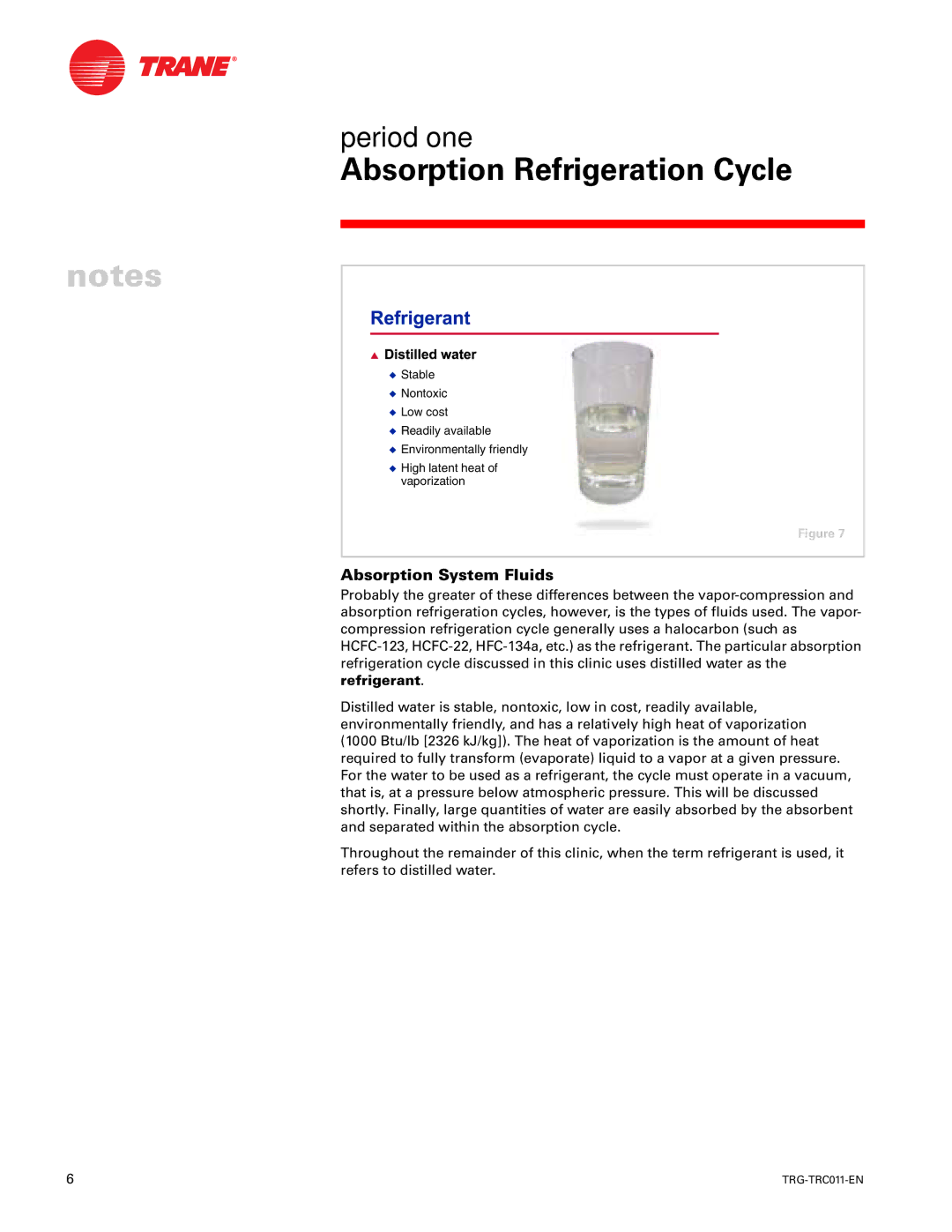
period one
Absorption Refrigeration Cycle
notes
▲ ![]()
◆Stable
◆Nontoxic
◆Low cost
◆Readily available
◆Environmentally friendly
◆High latent heat of vaporization
Figure 7
Absorption System Fluids
Probably the greater of these differences between the
Distilled water is stable, nontoxic, low in cost, readily available, environmentally friendly, and has a relatively high heat of vaporization
(1000 Btu/lb [2326 kJ/kg]). The heat of vaporization is the amount of heat required to fully transform (evaporate) liquid to a vapor at a given pressure. For the water to be used as a refrigerant, the cycle must operate in a vacuum, that is, at a pressure below atmospheric pressure. This will be discussed shortly. Finally, large quantities of water are easily absorbed by the absorbent and separated within the absorption cycle.
Throughout the remainder of this clinic, when the term refrigerant is used, it refers to distilled water.
6 |
|
